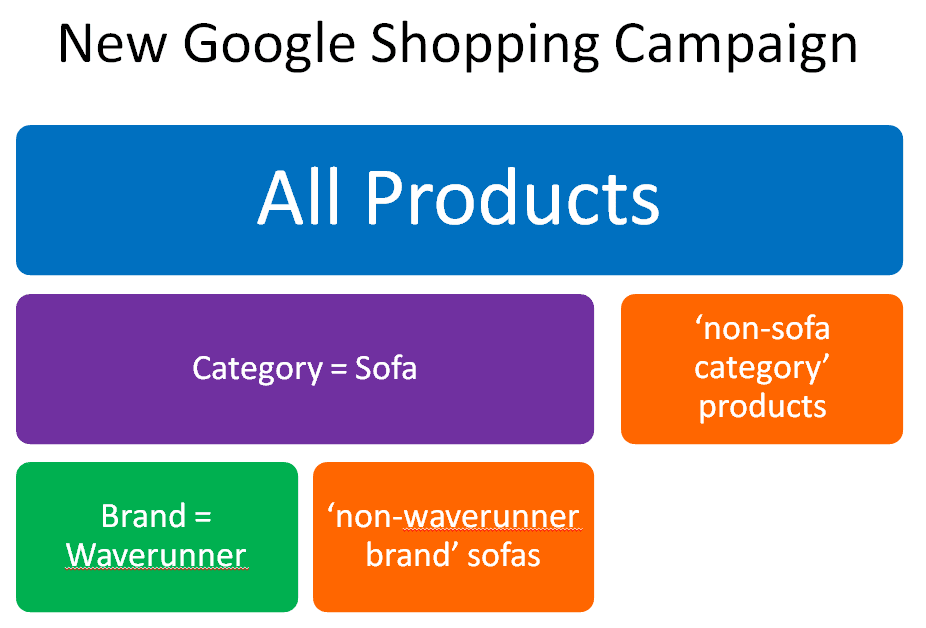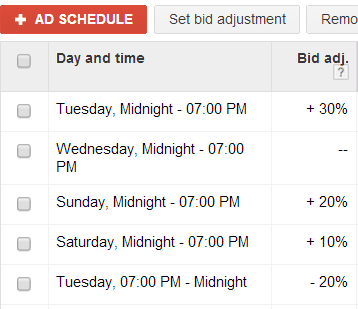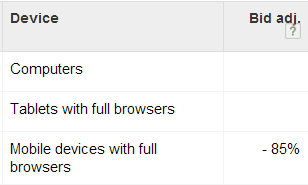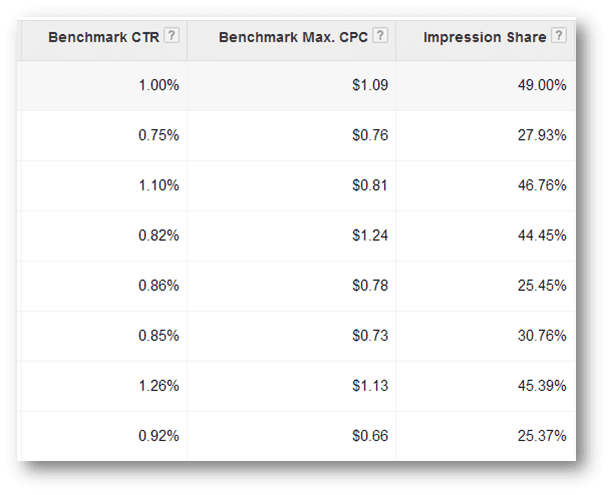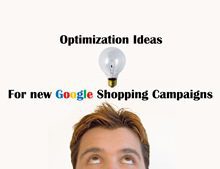 There is no hiding from Google’s forced Google Shopping campaign upgrade. While change is often uncomfortable, retailers cannot afford to sit back and ignore the upgrade of Product Listing Ad campaigns to the new Google Shopping campaign format. So, we might as well make the best of our feelings on Google’s constantly evolving platform.
There is no hiding from Google’s forced Google Shopping campaign upgrade. While change is often uncomfortable, retailers cannot afford to sit back and ignore the upgrade of Product Listing Ad campaigns to the new Google Shopping campaign format. So, we might as well make the best of our feelings on Google’s constantly evolving platform.
The only way to feel good about this change is to get out in front of it and optimize the new campaign for the most ideal results. In our experience over the last 9 months of working on the new campaign format, there are clear benefits with the new Shopping campaigns. Plus, we are seeing increasingly better results as we gain further understanding of how to optimize key aspects of the new format.
Let’s look at 8 optimization ideas retailers should be making in their new Google Shopping campaigns:
1. Use the new campaign structure to your benefit – New Shopping campaigns have a more streamlined structure. This means you can structure your campaigns so that you can more easily manage your product ad performances within your Shopping campaigns.
When it comes to optimizing your campaigns within this new structure, start by sub-dividing your “All Products” ad group into smaller segments of your product catalog. This may take a little more forethought beforehand, but with a thoughtful strategy you will be able to optimize your campaigns quickly and easily.
2. Layer custom labels to target most profitable product sub-segments – One way to structure your campaign for success is to leverage those five custom label options in a way that allows you to see a specific segment of your catalog. Optimization decisions should be based on profitability. By creating a custom label based on product margins, you can pay more appropriate bids for products with a higher margin (and less for products with lower margins).
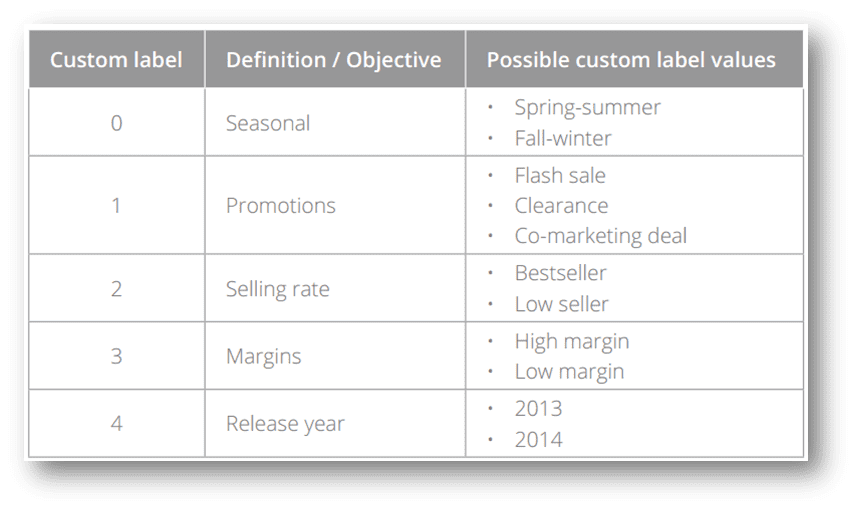
For example, it’s very difficult to make bid decisions if a sub-segment of your products includes products with margins between 20%-60%. Those higher margin items can withstand a higher cost-per-click that could win a higher position in the auction.
3. Split out your top-selling products – With the new structure, you can target top-selling products by segmenting them into their own product group. By going this granular with your top performers, you will be able to control your bids for high impression share. Additionally, for top products you want make sure they are meeting (and beating) the benchmark data points offered in the new campaign format.
For example, if your top-selling product has an impression share of 25%, you need to re-examine your bid strategy to see how much you can afford to increase your bid so this product is showing in more auctions.
4. Adjust bids at the lowest product group level – As you are adjusting your bids of product grouping, keep in mind that max CPC bids are only recognized at the lowest product level. The default ad group level bid only serves as a starting CPC value for your products. Once you start sub-segmenting your product targets, you will need to make your bid adjustments at those lower levels, or nothing will happen.
For the top 3 strategies made possible with the new Shopping campaign format, download our special report.
5. Leverage geo-targeting bid adjustments – As your Shopping campaign collects data, you can use the Geographic reporting option in the Dimensions tab to evaluate how your campaign’s performance is for specific geographic locations. Like search campaigns, geo-targeting bid adjustment features are available in Shopping campaigns on the Settings tab.
Consider bidding your campaign up for regions that produce profitable sales and down for regions that don’t convert as well.
6. Identify your day-parting trends and adjust bids – Similar to the geo-target bid adjustments, ad scheduling is available for Shopping campaigns. In our experience, online retailers experience the best results between 10am – 11pm. Additionally, Mondays and Tuesdays often have high sales volumes. However, you will want to evaluate your campaigns data on the Dimensions tab to find the best (and worst times), then adjust your ad scheduling bids accordingly.
7. Pay the right price for mobile shoppers – This post wouldn’t be complete without the mention of your mobile shoppers. As mobile shopping continues to climb, you need to monitor your Shopping campaign’s mobile performance and adjust the bids accordingly. Unlike ad scheduling and geo-targeting, mobile bid adjustments can be made at the ad group level. So, decide if you want to make a campaign-wide adjustment for mobile devices or dig deeper into individual ad group level mobile performance.
Either way, adjust your mobile bids where your data shows performance differences.
8. Use the benchmark data to make educated adjustments – The new benchmark data columns that are now available in your Shopping campaigns should be leveraged intelligently. Just because Google is offering up this industry-wide data doesn’t mean you should take it as gospel and jack your bid up to the benchmark level. There are several factors you should consider before adjusting bids solely based on these benchmark metrics.
- First, can your product target sustain a higher bid based on your campaign goals and product margins? If you have a bunch of products lumped into one target because you ignored tip #2, then that benchmark max CPC could be a source of hemorrhaging if your margins can’t withstand the cost.
- Second, how is your impression share for your products compared to your click-through-rate? Perhaps you have a low impression share and a high click-through-rate for a product segment. It could seem that there is room to increase your bids to improve impression share and win more clicks. But, don’t go crazy. Anytime you are increasing bids, consider a slow and steady pace so you stay in control of your ad spend and profitability.
These may not be the only ways to optimize your Google Shopping campaigns once you’ve switched to the new format. However, these are a good place to start. New Shopping campaigns will not initially have any historical data. You should migrate your campaigns (or create new ones) as soon as possible to begin collecting the historical data you need to make the right decisions based on your own trends.

